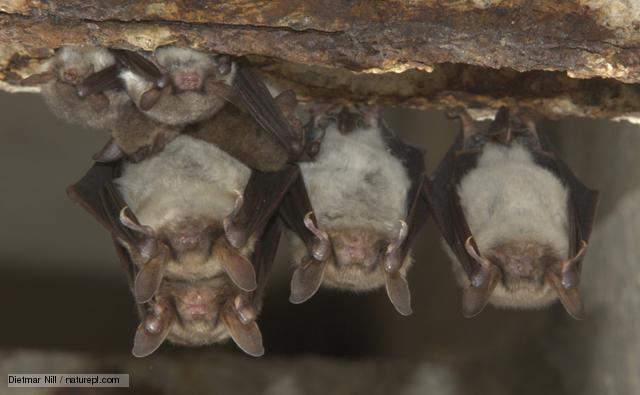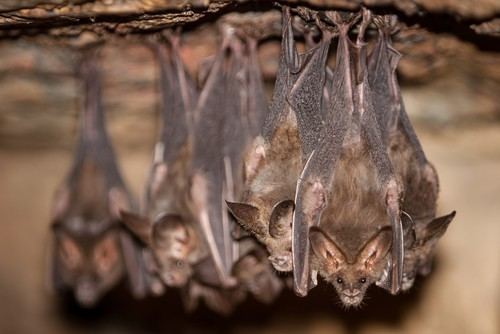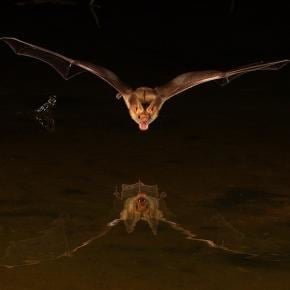Kingdom Animalia Scientific name Vespertilionidae Phylum Chordata Order Bat | Suborder Microchiroptera Higher classification Microbat Rank Family | |
 | ||
Superfamily Vespertilionoidea
Gray, 1821 Lower classifications Mouse‑eared bat, Pipistrellus, Eptesicus, Common pipistrelle, Brown long‑eared bat | ||
Vesper bat meaning
Vesper bats (family Vespertilionidae), also known as evening bats or common bats, are the largest and best-known family of bats. They belong to the suborder Microchiroptera (microbats). Over 300 species are distributed all over the world, on every continent except Antarctica. It owes its name to the Latin word vespertilio ("bat"), from vesper, meaning "evening".
Contents

Vesper bat kuhl s pipistrelle
Evolution

Molecular data indicate Vespertilionidae diverged from Molossidae in the early Eocene period. The family is thought to have originated somewhere in Laurasia, possibly North America. A recently extinct species, Synemporion keana, is known from the Holocene of Hawaii.
Characteristics

Almost all vesper bats are insectivores, exceptions being some Myotis and Pizonyx species that catch fish and the larger Nyctalus species that have been known on occasion to catch small passerine birds in flight. The dental formula of vesper bats varies between species:
They rely mainly on echolocation, but they lack the enlarged noses some microbats have to improve the ultrasound beam, and instead "shout" through their open mouths to project their ultrasound beams. In compensation, many species have relatively large ears.
As a group, vesper bats cover the full gamut of flight ability, with the relatively weak-flying Pipistrellus that have fluttery, almost insect-like flight to the long-winged and fast-flying genera such as Lasiurus and Nyctalus. The family size range is from 3 to 13 cm (1.2 to 5.1 in) in length, excluding the tail, which is itself quite long in most species. They are generally brown or grey in color, but some have brightly colored fur, with reds, oranges, and yellows all being known, and many having white patches or stripes.
Most species roost in caves, although some make use of hollow trees, rocky crevices, animal burrows, or other forms of shelter. Colony sizes also vary greatly, with some roosting alone, and others in groups up to a million individuals. Species native to temperate latitudes typically hibernate, while a few of the tropical species aestivate.
Classification
Four subfamilies are recognized:
The above grouping of subfamilies is the classification according to Simmons and Geisler (1998). Other authorities raise three subfamilies more: Antrozoinae (which is here the separate family of pallid bats), Tomopeatinae (now regarded as a subfamily of the free-tailed bats), and Nyctophilinae (here included in Vespertilioninae).
